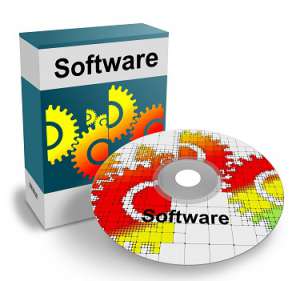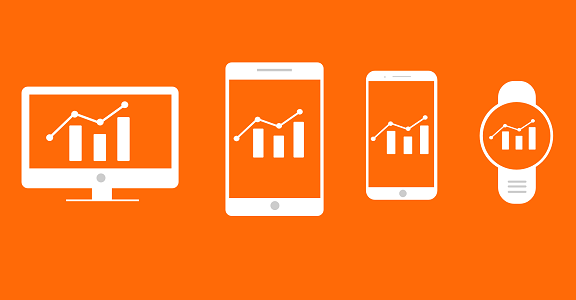Software as a service (SaaS) is here to stay. Suppliers have moved to a new model, the ‘pay as you go’ system. Those of us who remember the old-fashioned way to purchase IT, when you bought a disk with your program for a fixed, upfront price that you downloaded onto your computer, are increasingly seen as out of touch ‘dinosaurs’, whose ‘rose-tinted’ views are frequently dismissed as being hopelessly behind the times.

It’s easy to see why software providers have taken this route. From a service provider point of view the monthly subscription model practically guarantees a regular and more predictable cashflow into the business, with users paying each month rather than when they buy an upgrade. The monthly fees look manageable to a prospective customer, they don’t have to find the whole cost and pay for it upfront. No longer do you have to provide support for customers who don’t want to replace or upgrade their older systems, as upgrades are done for everyone, automatically. Because change is always disruptive, users will be reluctant to move to a competitor once they’ve made the switch to your software. Finally, our legislators sometimes play into their hands by insisting that we switch. Recent GDPR legislation and the UK’s forthcoming ‘Making Tax Digital’ requirements have allowed the industry, with its well-placed and influential lobbyists, insist that every business – no matter how large or small – comply with the same digital rules which are difficult or impossible to do without upgrading your IT software.
But is this a raw deal for the customer? Have we got SaaD (Software as a Disservice)?
It’s possible.
Here’s why
- Pay as you go means you’re still locked into the product in precisely the same way as before because coming out still means moving data from one system to another. This means management time, effort and hassle to change systems. It’s still risky to switch provider.
- Monthly fees can easily outstrip what you would have paid over the lifetime use of the product e.g. a £300 one-off price tag is the equivalent of just over a year at £22 per month subscription. Given that most purchased software would last a business more than 2 to 3 years before it needed upgrading, that’s an increased cost of £492 or over 2 ½ times the cost of buying outright.
- Problems with products are not always dealt with by the supplier and can develop after the initial installation. If a business had a problem installing a new product this would result in a complaint and getting the issue fixed. With pay as you go, glitches are not always detected and resolved at the outset, leaving the customer with a product that doesn’t work and the unappealing prospect of trying to get through to a real person in the software company that has the knowledge to fix it. I personally abhor the practice many suppliers use of hiding their support contact phone number and instead keeping you waiting through their email ‘ticket’ systems. In practice, this means a user with a problem cannot fix it without delay and disruption to their working day, which has a negative effect on productivity. Often their website directs you to videos or ‘How to guides’ that don’t always, in practice, tell you enough detail to fix the problem yourself.
- Often you are paying for functionality that you’ll never need or use rather than just buying the product that is right for your business. The same phenomenon happened with mobile phones, as the technologists driving the new product development added more and more functionality that wouldn’t, in practice, be used by most of their customers. Once you’ve bought SaaS you are constantly being bombarded with new upgrades, emails telling you about new functionality and getting confused as the dashboard and menus are changed without your prior notice or consent. This is rarely conducive to improving productivity and occasionally the company insists that your monthly fees go up to pay for something you never asked for in the first place! Conversely, larger organisations that may wish to have more customisation of their IT systems are often limited in their ability to do this.
- Honesty regarding functionality of the software. Occasionally, in my experience, you contact a support line only to find that the software company knew there were issues with connectivity. For example, we use one of the best-known accountancy SaaS packages, but it has intermittent problems connecting to our bank feed. The company in question, when asked to help us deal with this, knew from the outset that there could be issues, but this wasn’t explained on their website before we went ahead and moved our systems over, nor was it picked up during our 2-week free trial period. Talking to the company concerned did not get a sympathetic response or a reduction of the fees we pay to use it, even though we are still unable to get this to work correctly several months later. Our previous system, which just lived on one PC, didn’t integrate with our bank account, but a monthly bank reconciliation was relatively quick and painless to perform.

- Another reason to be wary of this way of doing business is data security. Your previous business server might have been old, and it may have been a little slower than you’d like, but access to it was restricted. With the new ‘cloud based’ servers a customer no longer controls the physical location or has complete control about whether the data can be accessed by a hacker. Remembering passwords has now become a full-time occupational hazard (here at Aardvark Marketing we even have specialist software that helps us deal with this) and if you forget to bring your mobile phone with you the 2-step security log in becomes not a safety feature but a barrier to legitimate entry. It’s all too easy to click to open a rogue email masquerading as an important upgrade from your banking software, your accountancy software, your email systems, your CRM etc. That means we all need ever more expensive IT back-up systems to take care of us. Our data, and our customers data, has become a little less secure because it’s all interconnected.
- Finally, control. We’re now in the hands of our software suppliers as never before. If they go out of business because of mis-management or lose out to a more competitive product, we can potentially lose access to our precious data, systems and processes. Just like those customers who bought into Betamax (for better quality sound and vision) rather than VHS video, your software could be obsolete, and you’ll have to invest time, money and effort in replacing it with a different product. Recently, we had access to our cloud-based project management system blocked because of tightened cyber security measures added by our service office internet provider. Like the driver at the steering wheel of a driverless car, we have no choice about these settings, someone external to our organisations is effectively imposing ‘controls’ on our behalf.
Here at Aardvark Marketing we’re not luddites, we were early adopters of many of these new and exciting systems. We’ve won numerous awards for innovation and some of our own customers are building their business on the SaaS model. If I could wave a magic wand I’d like more thought from our software providers (large and small). Yes, the world is your oyster as far as breaking modern technology boundaries is concerned, but good marketing starts with really getting under the skin of your customers. There is a difference between customers who are huge fans of your software and those who merely bought it because it is the market leader or even because they were misled into believing it the latest silver bullet.
If you’d like all your customers to be raving fans, why not talk to us on 01905 885 285 or contact us here.
